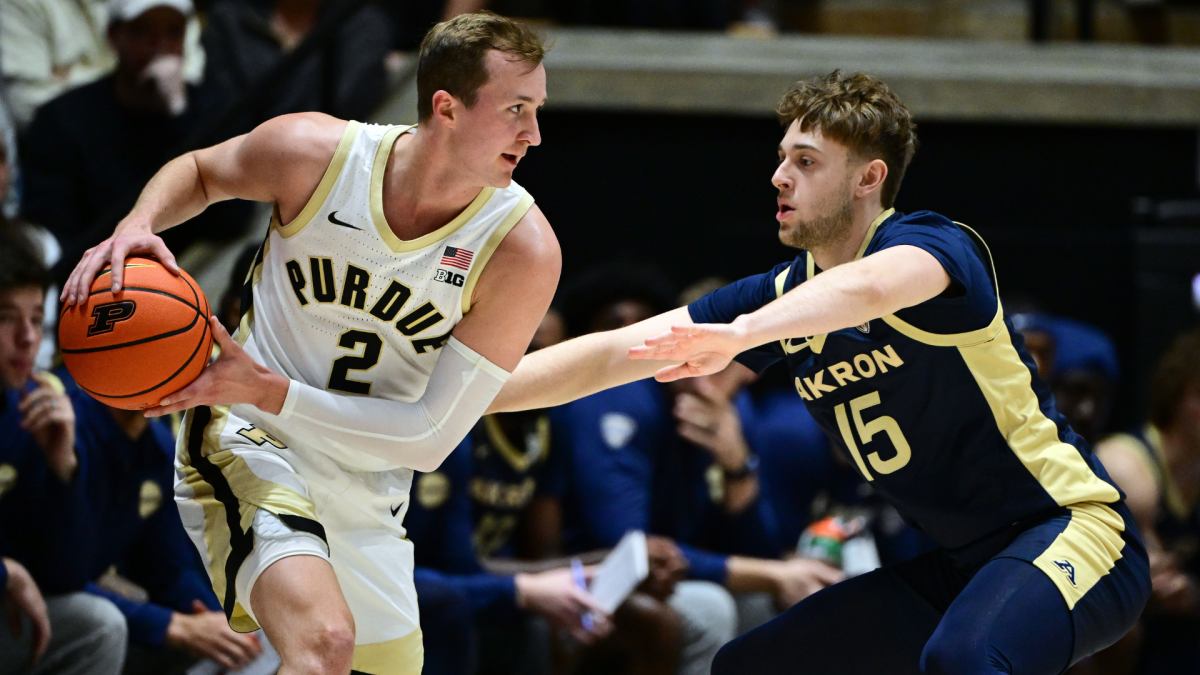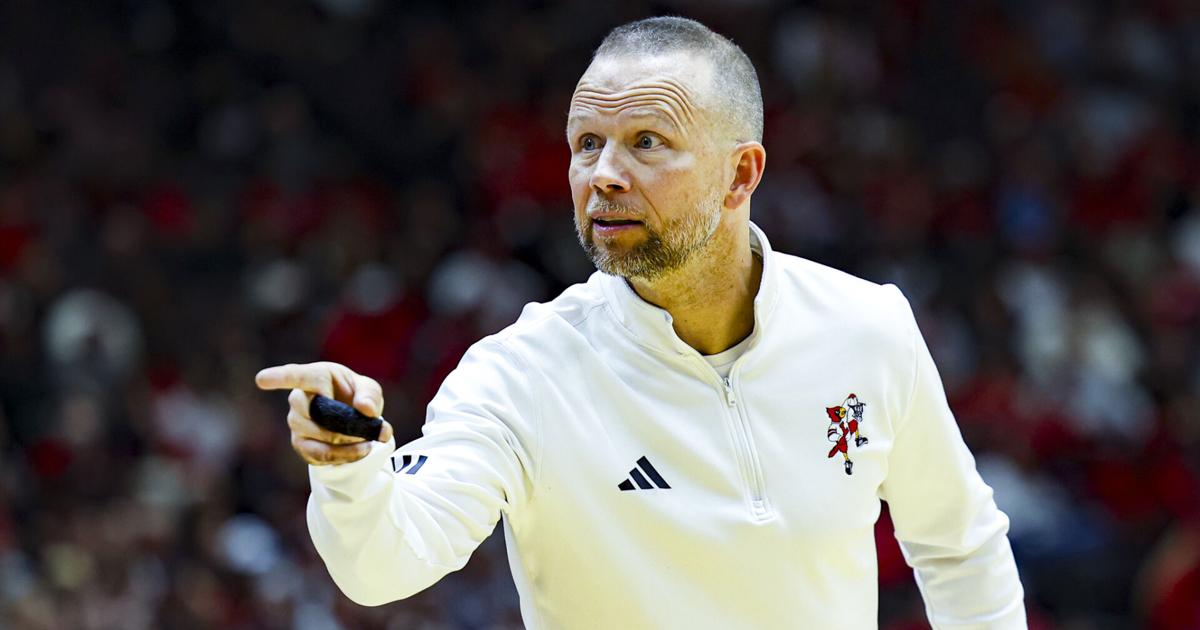The Grand Illusion: Why the AP Poll is an Insult to Your Intelligence
Let’s get one thing straight. The Associated Press Top 25 poll is not a ranking of the best college basketball teams in the nation. Not even close. What it is, is a finely tuned, week-by-week narrative-crafting machine designed for one purpose and one purpose only: to generate storylines that fuel the multi-billion dollar behemoth of college sports media and gambling. It’s a work of fiction. A beautifully orchestrated piece of theater where the actors are unpaid kids and the box office receipts go straight into the pockets of television executives and university administrators.
It’s a complete dog and pony show.
The Anointed One: Purdue’s Phony Coronation
So, Purdue is number one. Again. They received 46 of 61 first-place votes after dismantling a Texas Tech team that the poll itself had propped up to No. 20, creating the illusion of a ‘marquee’ win. How convenient. Do you see how the game works? The poll creates the giants so that the chosen ones can slay them on national television. It’s not sports; it’s professional wrestling with better PR. Purdue isn’t necessarily the best team; they are simply the most convenient story right now. They’re the safe, Midwestern, ‘play-the-right-way’ narrative that networks can sell to a broad audience. They are the protagonist in this season’s script.
But who are these 61 voters, these supposed arbiters of basketball truth? They’re just sports writers. Guys with deadlines, personal biases, and a vested interest in keeping their access to the programs they cover. Do you really believe a writer in Louisville, as mentioned in the source material, who admits he’s in a rush, is conducting a deep, unbiased analysis of West Coast basketball? Of course not. He’s glancing at a few scores, confirming the prevailing narrative, and filing his ballot so he can get on with his day. These ballots aren’t sacred documents of analysis; they’re weekly homework assignments, often filled out with the same level of care you gave to your high school algebra. They vote with the herd because it’s easy and it protects the status quo.
And what does the status quo protect? The money. Always the money.
Follow the Money: Rankings, Ratings, and Rackets
Every single shift in that poll is a calculated move with financial implications that would make your head spin. It’s not a coincidence that certain teams get the benefit of the doubt while others plummet for a single loss. This isn’t about wins and losses on a hardwood court; it’s about wins and losses on a Wall Street ticker. The real game is played by networks like ESPN and CBS, and the casinos in Las Vegas.
Think about it. Why does Arizona, a team from the imploding Pac-12, suddenly climb to No. 2? What’s the angle there? Could it be to create a compelling, top-tier challenger to Purdue, manufacturing a ‘Clash of Titans’ narrative that will draw millions of eyeballs—and millions in advertising revenue—later in the season? You bet it is. They need a powerful antagonist for their story. Arizona fits the bill. A high-flying West Coast team to contrast with the Midwestern grit of Purdue. It’s good for business.
It’s just marketing.
The Vegas Connection
And what about the betting lines? The AP Poll is the single most influential public tool for shaping perception, which directly influences the betting market. When a team like Alabama, a program mired in controversy not too long ago, conveniently slides back into the top 10, what does that do? It re-legitimizes them. It makes them a ‘good bet’ again. It tells the casual fan, the weekend gambler, that they’re a team to watch, a team to put your money on. The movement in the poll isn’t reflecting reality; it’s creating a new reality for the express purpose of generating action.
Who benefits when Kansas, a perennial powerhouse, a ‘blue blood’, tumbles completely out of the Top 25? It creates chaos. It generates headlines. It fuels the debate shows for a week. But it also creates a massive value proposition for bettors. ‘How can Kansas not be ranked?’ people will scream. Vegas sees this, adjusts the lines, and cashes in on the public’s manufactured outrage and confusion. Every jump, every fall, is a signal to the market. A nudge here, a shove there. The pollsters might not be getting a direct cut, but they are the unwitting (or, more cynically, witting) cogs in a machine that enriches the gambling industry. Are they that naive? Or are they just playing their part in the system that butters their bread? You tell me.
When Indiana, another historic program with a massive fanbase, joins the poll, it’s not just a reflection of their recent performance. It’s a business decision. It energizes one of the sport’s largest and most passionate markets. It means more people in Indiana are tuning in, placing bets, and buying merchandise. The poll is simply an announcement: ‘This product is now available for your consumption.’ It’s that cynical. It’s that simple.
A House of Cards: The Inevitable Collapse of the NCAA Farce
Ultimately, the AP Poll is just a symptom of a much larger disease. It’s a painted smile on the rotting corpse of amateurism. For decades, the NCAA and its member institutions have operated one of the most successful cartels in history, building billion-dollar empires on the unpaid labor of young athletes, many of whom come from impoverished backgrounds. They sold us a fairy tale of the ‘student-athlete’ while they cashed nine-figure television checks and paid coaches lottery-winner salaries.
The whole thing is a lie. A beautiful, profitable, and utterly corrupt lie.
The foundations are already crumbling. The advent of Name, Image, and Likeness (NIL) and the chaos of the transfer portal have exposed the system for what it always was: a professional league masquerading as an educational endeavor. The thin veneer of amateurism has been stripped away, and now we see the raw, unregulated capitalism that was always churning beneath the surface. The AP Poll is one of the last vestiges of that old system, a tool used to maintain the illusion that this is all still just a game, a noble pursuit of excellence.
The End Game
What is the future? The system as we know it is unsustainable. The conferences are already cannibalizing each other in a desperate scramble for television markets. The players are, rightly, beginning to demand their fair share of the revenue they generate. The entire model is buckling under the weight of its own hypocrisy. How long can you pretend a player receiving a seven-figure NIL deal from a booster collective is just a student playing for the love of the game?
How long can this charade last?
The AP Poll will continue its weekly dance, anointing and deposing teams to feed the 24/7 news cycle. Purdue will be celebrated. Arizona will be positioned as the challenger. Commentators will breathlessly debate whether Michigan State’s ‘huge win’ justifies their new spot. It’s all noise. It’s all a distraction from the fundamental truth: you are watching a broken, corrupt system in its final, chaotic days. The rankings don’t matter. The only thing that ever mattered was the money. And the money is about to change hands. Don’t be fooled by the smoke and mirrors of a Top 25 list. Look behind the curtain. What you’ll find is rotten to the core.


